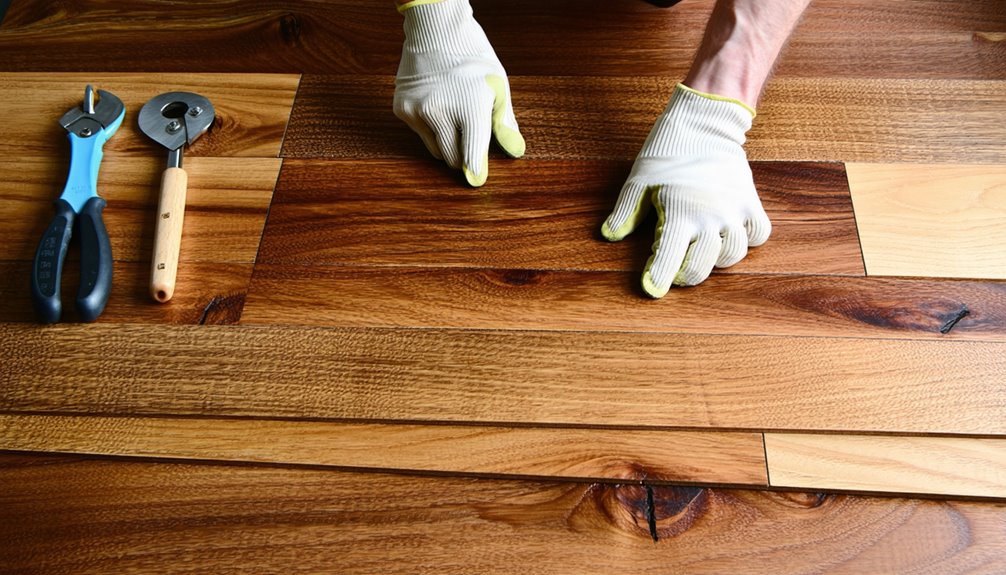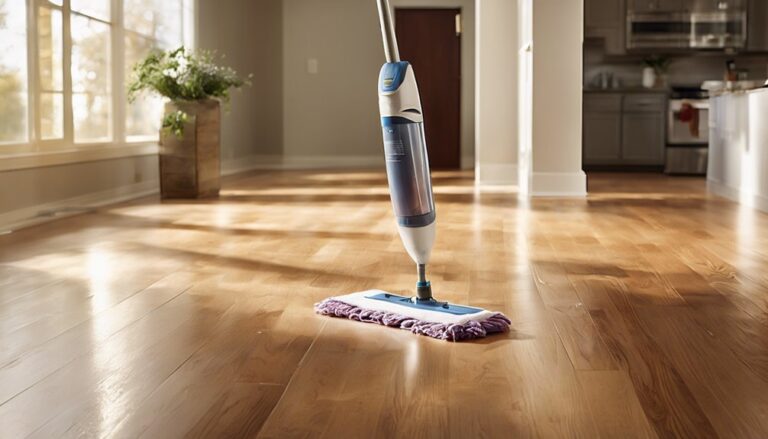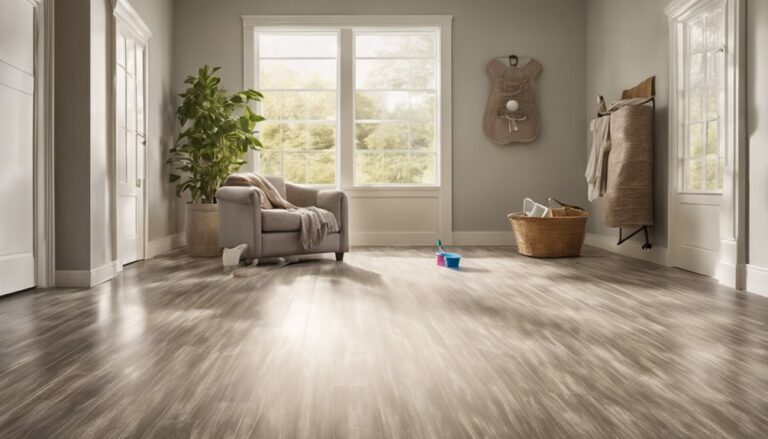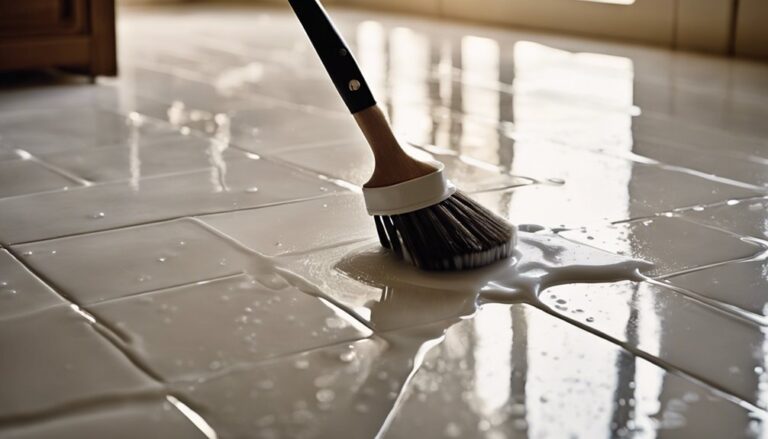To repair laminate flooring, start by evaluating the damage. Check for scratches, dents, water damage, and loose planks. For minor scratches, a laminate repair kit or colored wood marker can work wonders. For deeper dents, use a damp cloth and hot iron; replace large damaged planks altogether. Make sure you fix any water source before drying the area. When swapping out planks, carefully pry the damaged piece and align a new one with the rest. To keep your floors looking great, consider preventive maintenance techniques. Stick around to discover more tips on how to maintain your laminate 床材 effectively.
被害の評価

Before you explore repairing your laminate flooring, it's important to assess the damage thoroughly. Start with a careful damage evaluation to identify the extent of the issues. Look for warping, discoloration, or loose planks. Use inspection methods like the "tap test"—gently tap each plank to check for hollow sounds that indicate separation from the underlayment. You might also want to inspect the seams for gaps or signs of moisture. This step not only helps you understand what needs fixing but also prepares you for the next phase of repairs. By knowing exactly what you're dealing with, you can confidently decide on the best course of action, ensuring your laminate flooring retains its beauty and functionality.
傷やへこみの修復
Scratches and dents can mar the appearance of your laminate flooring, but with the right techniques, you can restore its original look. For effective scratch repair, start by using a laminate repair kit or a colored wood marker that matches your floor. Apply it directly into the scratch and wipe away excess. For dent removal, try placing a damp cloth over the dent and using a hot iron for a few seconds; the heat will help the laminate swell back into shape.
| 問題 | Solution |
|---|---|
| Light Scratch | Use a laminate repair kit |
| Deep Scratch | Apply colored wood marker |
| Small Dent | Heat with damp cloth |
| Large Dent | Replace the damaged plank |
With these tips, you'll keep your flooring looking great!
Fixing Water Damage
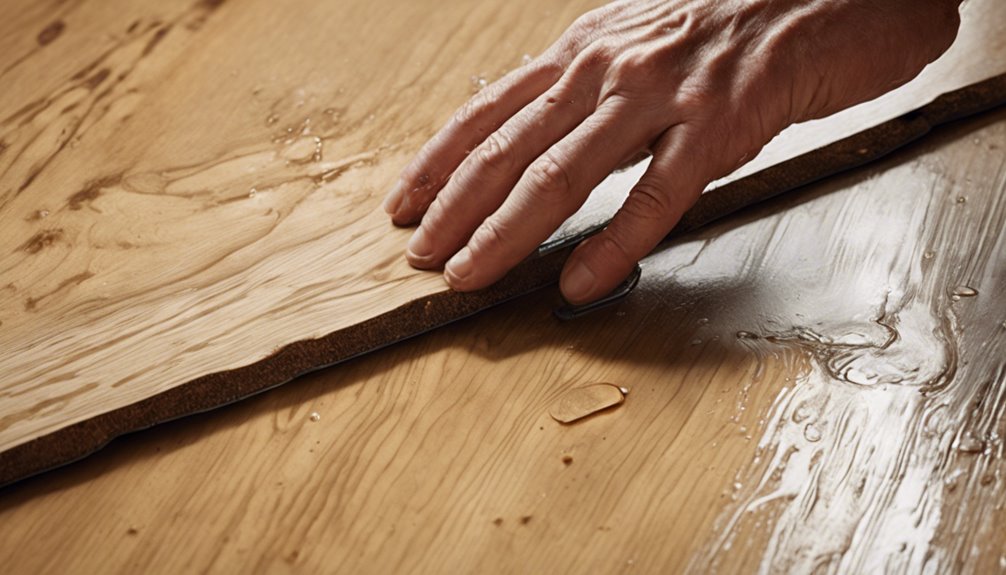
Although laminate flooring is designed to resist moisture, water damage can still occur, often leading to unsightly warping or staining. If you find yourself facing this issue, don't worry! Here are some steps you can take to address the problem effectively:
- Identify the source of water damage and fix it.
- Remove excess moisture by using a wet/dry vacuum.
- Dry the affected area with fans or dehumidifiers.
- Apply a laminate repair kit to seal minor cracks or gaps.
- Monitor the area for further signs of damage.
Replacing Damaged Planks
Over time, even the most durable laminate flooring can suffer from damage that requires replacing planks. If you're facing this situation, start by selecting the right tools. You'll need a pry bar, a utility knife, and a tapping block for a smooth removal. Carefully pry up the damaged plank while ensuring proper plank alignment with adjoining pieces. If your flooring is glued or interlocked, follow the specific method for your type. Once removed, measure and cut the new plank to fit, then insert it into place, making sure it aligns perfectly with the surrounding pieces. Finally, secure it according to your flooring type—whether it's gluing, locking, or nailing. Enjoy the fresh look of your rejuvenated floor!
Preventive Maintenance Tips
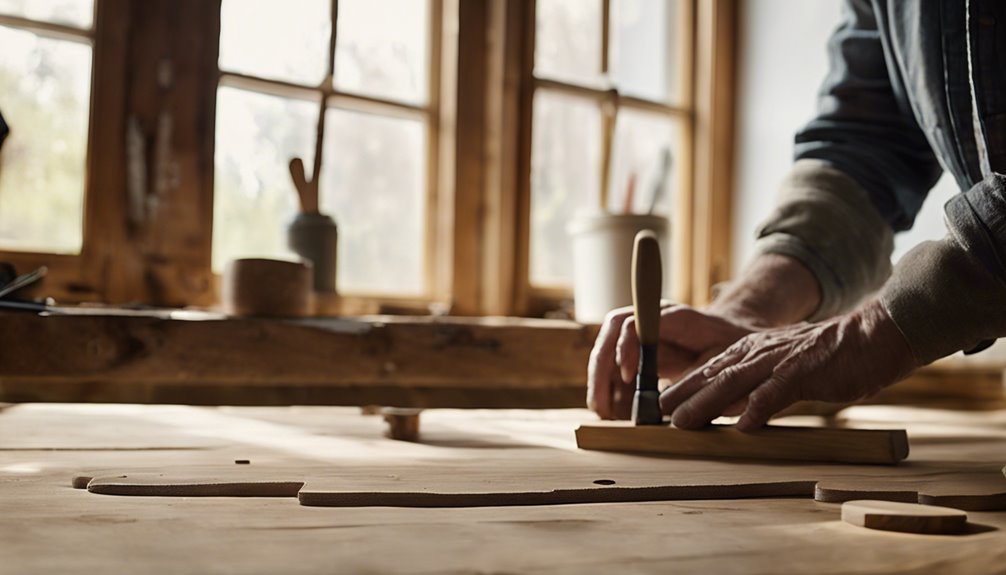
Taking care of your laminate flooring can considerably extend its lifespan and maintain its appearance. By implementing some simple preventive maintenance tips, you'll keep your floors looking great without the hassle.
- Use gentle cleaning techniques to avoid scratches.
- Place mats at entryways to catch dirt and debris.
- Apply protective coatings to shield against wear.
- Keep furniture pads under legs to prevent dents.
- Avoid excessive moisture; wipe up spills immediately.
よくある質問
Can I Use Regular Wood Glue for Laminate Repairs?
You can't always judge a book by its cover, and that applies to laminate repairs too. Using regular wood glue isn't the best choice for laminate since it won't bond effectively. Instead, consider wood glue alternatives designed for laminate, like epoxy or specific laminate adhesives. These products guarantee a strong hold and work with various laminate repair techniques. So, when it comes to fixing your flooring, choose wisely for lasting results!
How Can I Prevent Future Damage to My Laminate Flooring?
To prevent future damage to your laminate flooring, you'll want to focus on a few key preventive measures. First, use felt pads under furniture to avoid scratches. Regular maintenance, like sweeping or vacuuming to remove debris, is essential too. Consider using area rugs in high-traffic zones for added protection. Also, avoid excessive moisture by promptly cleaning spills. With these simple steps, you can keep your laminate floors looking great and extend their lifespan!
Is It Safe to Use a Steam Cleaner on Laminate Floors?
Using a steam cleaner on laminate floors isn't recommended due to potential steam damage. The heat and moisture can seep into seams, leading to warping or separation. For effective laminate floor maintenance, stick to a damp mop or specialized cleaner. If you want that fresh, clean feel without the risks, it's best to embrace safer cleaning methods. Your floors will thank you, and you'll enjoy a worry-free environment!
What Tools Do I Need for Laminate Floor Repair?
When you're diving into floor repair techniques, there are some essential tools you'll need. You'll want a laminate floor puller for removing damaged planks, a tapping block for snug fitting, and a utility knife for precise cuts. Don't forget a moisture meter to check for water damage, and a mallet to guarantee everything fits perfectly. With these tools in hand, you're ready to tackle your laminate flooring challenges with confidence and ease.
How Do I Know if My Laminate Flooring Needs Replacing Instead?
You'll know your laminate flooring needs replacing when you spot signs like deep scratches, warping, or significant discoloration. While laminate can last around 15 to 25 years, factors like heavy foot traffic or moisture can shorten its lifespan. If you're noticing more than just superficial wear, it might be time to invest in a new floor. Consider how replacing it could enhance your space and provide a fresh, vibrant look!

